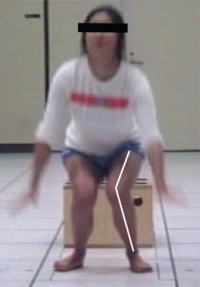Blog
Monthly Archives: January 2016
Hip Strength Predicts Non-Contact ACL Injury
As discussed in previous postings, there is growing consensus in the sports medicine community that hip muscle weakness is contributory to various knee injuries. For those involved in high-level competitive sports, the ACL (anterior cruciate ligament) is the most frequently ruptured ligament of the knee joint. Although risk factors for ACL tears are multifactorial, a new prospective study published by our group in the American Journal of Sports Medicine reports that an athlete’s hip strength predicts future non-contact ACL injury. Non-contact ACL tears result from an athlete’s inherent movement patterns (as opposed to direct blow or contact from an external object or player) during high-velocity multidirectional sports (such as basketball, soccer, football, and volleyball).
How exactly does hip strength influence the likelihood of ACL injuries? Basically, impaired hip strength is thought to underlie specific movement patterns that place excessive stress and strain on the ligaments and tendons of the knee. As evident in the figure below, there is significant inward collapse at the knee upon landing from a jump. Weakness and/or lack of control of the hip muscles (i.e. gluteus medius and gluteus maximus) is thought to be contributory to this inward motion of the knee. Interestingly, this specific movement pattern also has been shown to be a predictor of ACL tears in a previously published prospective study.1
So to what degree does hip strength influence ACL injury risk? To answer this question, we followed 501 competitive athletes (138 females and 363 males) over the course of a single sports season. Athletes deemed high risk for injury based on their preseason hip strength had their probability of ACL tears more than double. On the other hand, athletes classified as low risk based on their preseason hip strength test had their probability of ACL tears decrease by nearly 90%. These findings applied equally to men and women.
What does this mean for athletes concerned with tearing their ACL? Impaired hip strength more than doubles your risk of suffering an ACL tear. This is why at MPI we examine hip strength as part of our Return to Sport Testing Protocol. Also, we place a high emphasis on hip strength and movement retraining as part of our ACL rehabilitation and injury prevention programs. Regardless of where you do your training or rehabilitation however, you should consider dedicating more time to hip strengthening—your knees will thank you for it!
References
- Hewett TE, Myer GD, Ford KR, et al. Biomechanical measures of neuromuscular control and valgus loading of the knee predict anterior cruciate ligament injury risk in female athletes: a prospective study. Am J Sports Med. 33:492-501, 2005
This post was co-written by Rachel K. Straub, MS, CSCS



